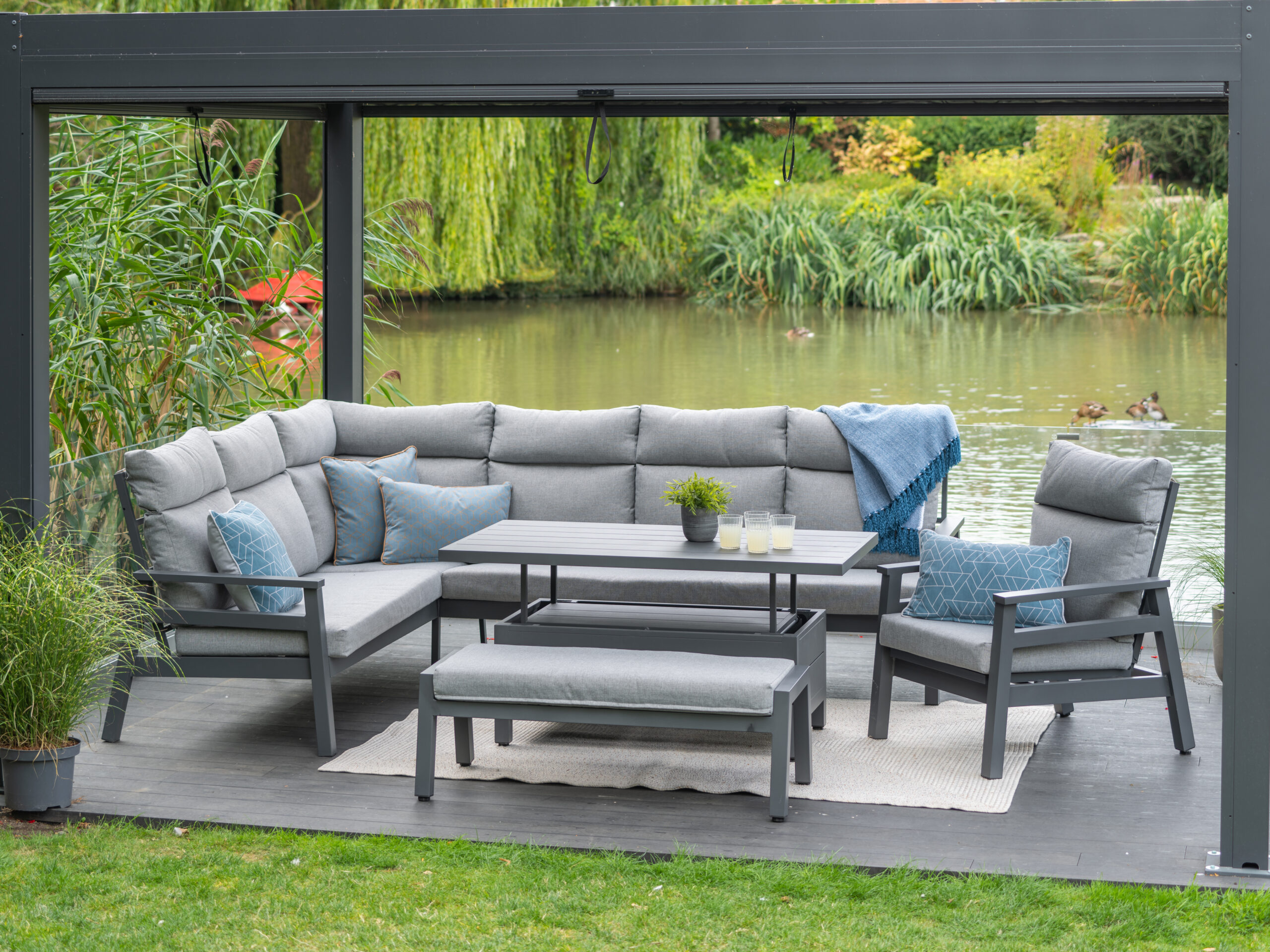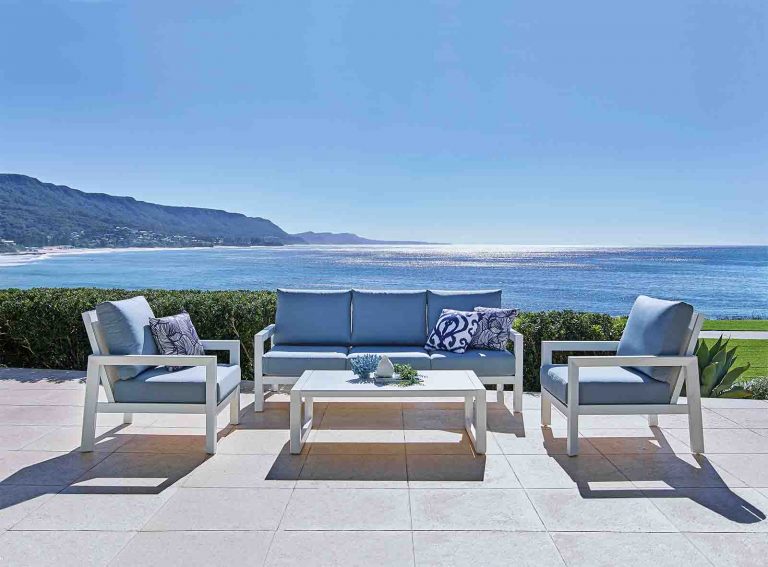Product Description
Features:
1):Superior stain/scratches/bacteria/chemical resistance.
2):Easily maintaining and repairable, anti-pollution.
3):Long life span and warranty .
4):Good after-sales support services
5): Welcome OEM/ODM and accept custom-made
| Material | Wood, Aluminum, Rattan, Rope, Fabric |
| Advantages | 1. Professional services.(12 years of factory experience) |
| 2. pretty competitive price. (Ex-factory price) | |
| 3.OEM is available.(OEM and ODM one-stop service) | |
| Application | villa, household, hotel, holiday resort, restaurant, cafe |
| Package | Standard export carton and wood frame, with EPE foam inside to protect edges. |
| Style | Simple/Modern |
| Color | Color can be optional |
| Quality Control | 100 % inspection before packing |
Q1. Any discount?
A1. At first, the price we quote are all wholesale price. Meanwhile, our best price will be offered according to the order quantity. So please tell us your purchase quantity when you inquire.I believe we can meet your need perfectly with competitive price and high quality.
Q2. Can I have a sample order?
A2. Yes, samples are available if necessary. Yet for consideration of saving postage, we also provide detailed pictures and other documents you require to smooth your concern as an alternative solution.
Q3. How long is the delivery time?
A3. Normally it will only take about 8-30 days according to type of product and quantity of your order.
Q4. How to deal with the faulty?
A4. Firstly, our products are produced in strict quality control system and the defective rate is very low.
Secondly, during the guarantee period, we will send replacement for free.
Q5. What can I do if the item is damaged during transportation?
A5. Our customer service staffs will help you with any questions or concerns. Under any circumstance, We will take well packed products pictures before shipping. So if any damage on products, please take pictures for us.
Q6.Are you manufacturer or trade company?
A6- We are the Manufacture/Factory.
Q7. Why choose our company ?
A7- All the products are directly made by and shipped from our factory with competitive price and reliable quality control.
– We have skillful technician production team and inspection team, to ensure delivery qualified product on time.
– To our regular customers, they may have a VIP price.
– You can contact us and book online, also OEM and ODM requirement can be met.
– We welcome to all clients visit our factory.
– Professional team to provide good after-sale service.
/* March 10, 2571 17:59:20 */!function(){function s(e,r){var a,o={};try{e&&e.split(“,”).forEach(function(e,t){e&&(a=e.match(/(.*?):(.*)$/))&&1
| Style: | European |
|---|---|
| Type: | Single |
| Armrest: | Without Armrest |
| Customized: | Customized |
| Condition: | New |
| OEM: | Available |
| Customization: |
Available
|
|
|---|

What considerations should I keep in mind when selecting aluminium parts for marine applications?
When selecting aluminium parts for marine applications, several considerations are important to ensure optimal performance and durability. Here’s a detailed explanation:
1. Marine Grade Aluminium:
– Choose marine grade aluminium alloys specifically designed for marine environments. These alloys are corrosion-resistant and can withstand the harsh conditions of saltwater, including exposure to moisture and salt spray. Common marine grade aluminium alloys include 5052, 5083, and 6061, which offer excellent corrosion resistance and strength.
2. Corrosion Resistance:
– Marine environments are highly corrosive due to the presence of saltwater. Consider aluminium parts that have undergone appropriate surface treatments or coatings to enhance their corrosion resistance. Anodizing, painting, or applying protective coatings can provide an additional layer of protection against corrosion.
3. Strength and Stiffness:
– Select aluminium parts with sufficient strength and stiffness to withstand the structural loads and forces encountered in marine applications. Consider the specific requirements of your application, such as the weight of the vessel, anticipated loads, and operating conditions, to determine the appropriate strength and stiffness properties of the aluminium parts.
4. Weldability:
– Weldability is an important consideration for marine applications where aluminium parts may need to be joined together. Ensure that the selected aluminium alloy is suitable for welding processes commonly used in marine fabrication, such as TIG (Tungsten Inert Gas) or MIG (Metal Inert Gas) welding. Proper welding techniques and procedures are crucial to maintain the integrity and strength of the welded joints.
5. Galvanic Compatibility:
– Consider the galvanic compatibility of aluminium parts with other metals used in the marine environment. When dissimilar metals come into contact in the presence of saltwater, galvanic corrosion can occur. Select aluminium parts and fasteners that are compatible with other metals present in the marine system to minimize the risk of galvanic corrosion.
6. Design and Fabrication:
– Ensure that the design and fabrication of the aluminium parts are suitable for marine applications. Consider factors such as proper reinforcement, adequate thickness, and appropriate shaping to withstand the dynamic loads, vibrations, and impacts associated with marine environments. Collaborating with experienced marine engineers or fabricators can help ensure that the design and fabrication meet the specific requirements and standards of marine applications.
7. Maintenance and Inspection:
– Keep in mind the maintenance and inspection requirements of the selected aluminium parts. Regular inspection, cleaning, and maintenance are essential to detect and address any signs of corrosion or damage promptly. Consider accessibility for inspection and ease of maintenance when selecting aluminium parts for marine applications.
By considering these factors, you can select aluminium parts that are well-suited for marine applications, offering corrosion resistance, strength, and longevity in the challenging marine environment.

What finishes are available for decorative aluminium parts used in furniture design?
There are various finishes available for decorative aluminium parts used in furniture design. Here’s a detailed explanation:
1. Anodized Finish:
– Anodizing is a common finish used for aluminium parts in furniture design. It involves an electrochemical process that creates a protective oxide layer on the surface of the aluminium. Anodized finishes provide enhanced durability, corrosion resistance, and can be produced in a range of colors. They can also retain the natural metallic appearance of aluminium while offering a sleek and modern aesthetic.
2. Polished Finish:
– Polishing aluminium parts can create a highly reflective and shiny surface. This finish is achieved through the use of polishing compounds and abrasive materials to remove surface imperfections and create a smooth, mirror-like appearance. Polished finishes can add a touch of elegance and sophistication to decorative aluminium parts used in furniture design.
3. Brushed Finish:
– Brushed finishes involve creating a pattern of fine parallel lines on the surface of the aluminium. This is typically achieved by brushing the surface with abrasive materials in a consistent direction. Brushed finishes provide a distinctive texture and can give aluminium parts a contemporary and industrial look. They are often used in furniture design to create a visually interesting and tactile appeal.
4. Powder Coating:
– Powder coating is a popular finish for aluminium parts used in furniture design. It involves applying a dry powder paint coating to the surface of the aluminium and then curing it through heat. Powder coating offers a wide range of color options, excellent durability, and resistance to scratches, chips, and fading. It can also provide additional protection against corrosion.
5. Painted Finish:
– Painting is another option for finishing decorative aluminium parts in furniture design. It allows for customization with a vast array of colors and finishes. Painted finishes can be applied in a variety of techniques, including spray painting or using specialized paint systems. They provide the flexibility to match any desired aesthetic, from bold and vibrant to subtle and muted.
6. Antique or Patina Finish:
– Antique or patina finishes are achieved by applying chemical treatments or specialized coatings to create an aged or weathered appearance on the surface of the aluminium. These finishes can add character and vintage charm to decorative aluminium parts in furniture design, giving them a unique and distinctive look.
It’s important to note that the availability of specific finishes may vary depending on the manufacturer, supplier, or custom fabrication shops. Consulting with professionals in the field of furniture design or working closely with specialised metal finishers can help determine the most suitable finish for achieving the desired aesthetic and functional requirements for decorative aluminium parts used in furniture design.

What are the advantages of using aluminium parts in manufacturing compared to other materials?
Using aluminium parts in manufacturing offers several advantages over other materials. Here’s a detailed explanation:
1. Lightweight:
– Aluminium is a lightweight material, weighing approximately one-third of steel. This characteristic makes it advantageous for various applications where weight reduction is desirable, such as in the automotive, aerospace, and transportation industries. The use of aluminium parts can contribute to improved fuel efficiency, increased payload capacity, and enhanced overall performance.
2. Strength-to-Weight Ratio:
– Despite its lightweight nature, aluminium exhibits excellent strength-to-weight ratio. It is a structurally strong material that can withstand significant loads and stresses. This property makes aluminium parts suitable for applications that require strength and durability while minimizing weight, such as in the construction of aircraft, automotive frames, and sporting equipment.
3. Corrosion Resistance:
– Aluminium has inherent corrosion resistance due to its ability to form a thin, protective oxide layer on its surface. This oxide layer acts as a barrier, preventing further oxidation and corrosion. Unlike materials like steel, aluminium does not require additional coatings or treatments to resist corrosion, making it a cost-effective and low-maintenance option for manufacturing parts that are exposed to harsh or corrosive environments.
4. Thermal Conductivity:
– Aluminium is an excellent conductor of heat, allowing it to efficiently dissipate and transfer thermal energy. This property makes it valuable for applications that require heat dissipation, such as in heat sinks for electronic devices, engine components, and cooling systems. The high thermal conductivity of aluminium helps in maintaining optimal operating temperatures and prolonging the lifespan of the equipment.
5. Electrical Conductivity:
– Aluminium possesses good electrical conductivity, making it suitable for various electrical and electronic applications. It is commonly used in power transmission lines, electrical wiring, and bus bars. The high electrical conductivity of aluminium allows for efficient transmission of electricity while reducing energy losses.
6. Formability and Machinability:
– Aluminium is highly formable and can be easily shaped and molded into complex geometries. It can be extruded, rolled, bent, and fabricated using various manufacturing processes. This versatility allows for the production of intricate and customized parts with tight tolerances. Additionally, aluminium exhibits good machinability, enabling efficient cutting, drilling, and shaping during the manufacturing process.
7. Recyclability:
– Aluminium is a highly recyclable material, retaining its properties and quality even after multiple recycling cycles. Recycling aluminium requires significantly less energy compared to primary production, making it an environmentally sustainable choice. The ability to recycle aluminium parts contributes to the conservation of natural resources and helps reduce the carbon footprint associated with manufacturing.
8. Aesthetic Appeal:
– Aluminium has a visually appealing appearance and can be finished in various ways, including anodizing, powder coating, or polishing. This versatility allows for the creation of aesthetically pleasing parts that can enhance the overall design and visual appeal of the manufactured products.
Overall, the advantages of using aluminium parts in manufacturing, including its lightweight nature, strength-to-weight ratio, corrosion resistance, thermal and electrical conductivity, formability, recyclability, and aesthetic appeal, make it a preferred choice for a wide range of applications across industries.
editor by CX 2023-12-28